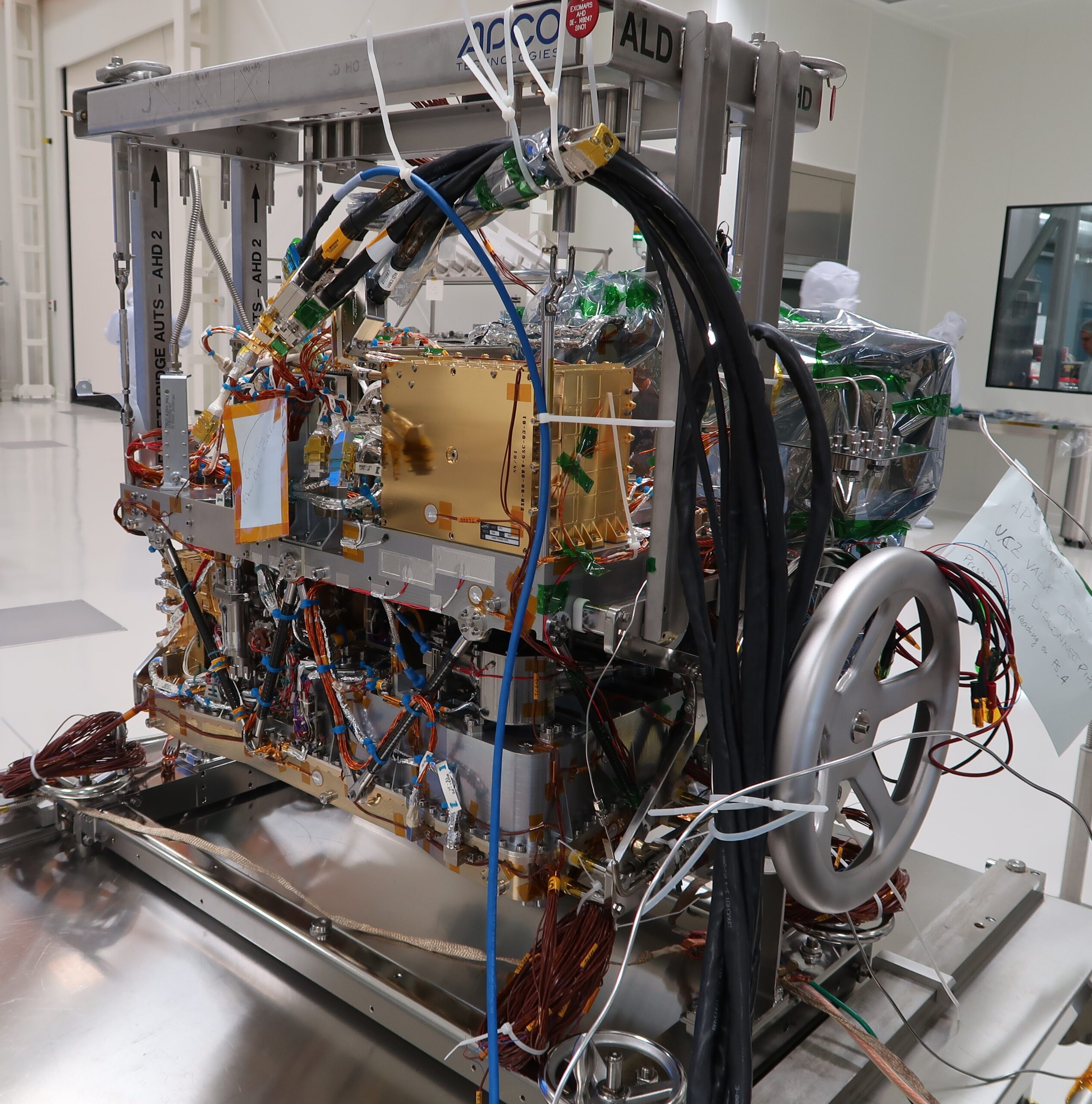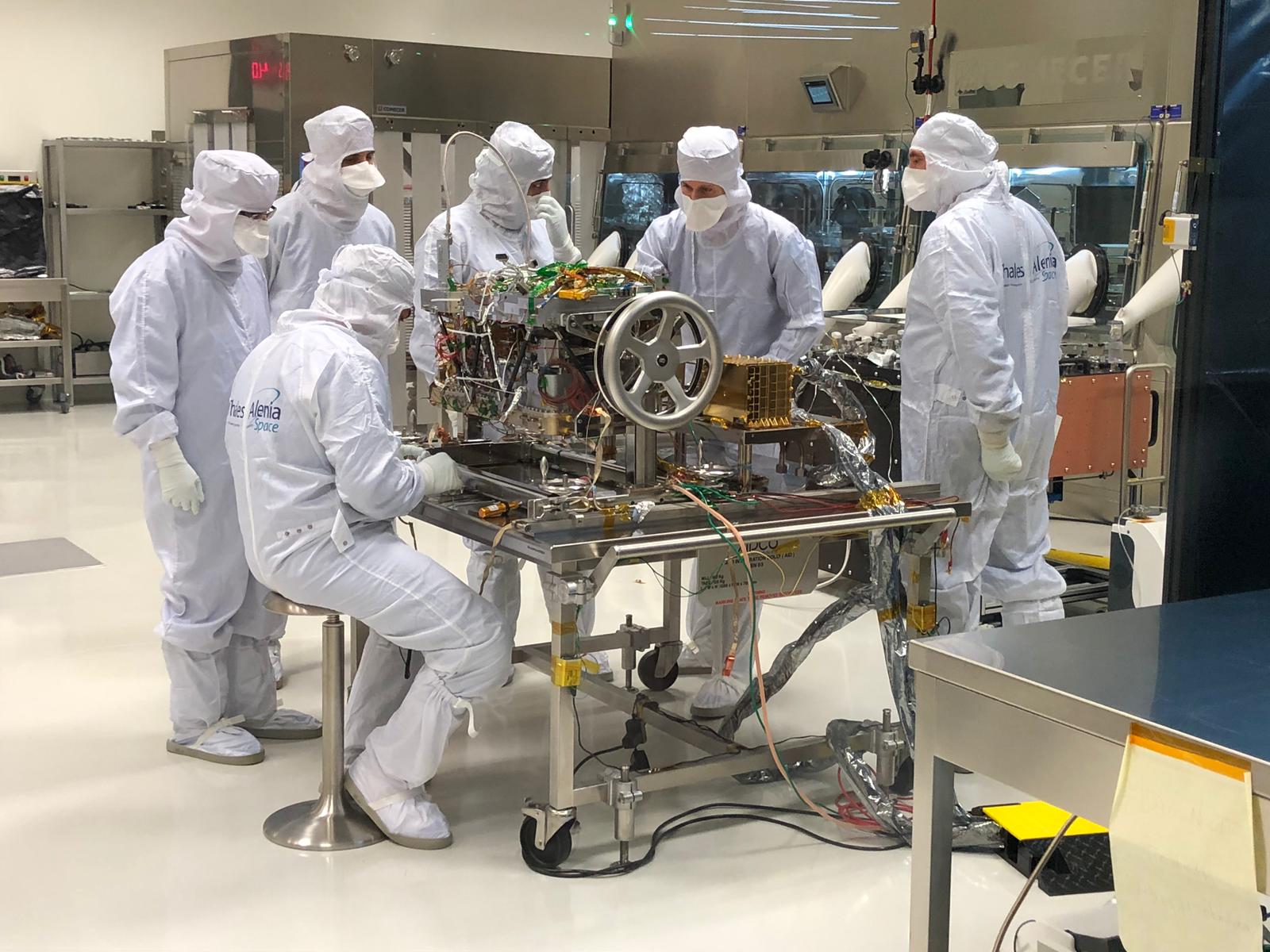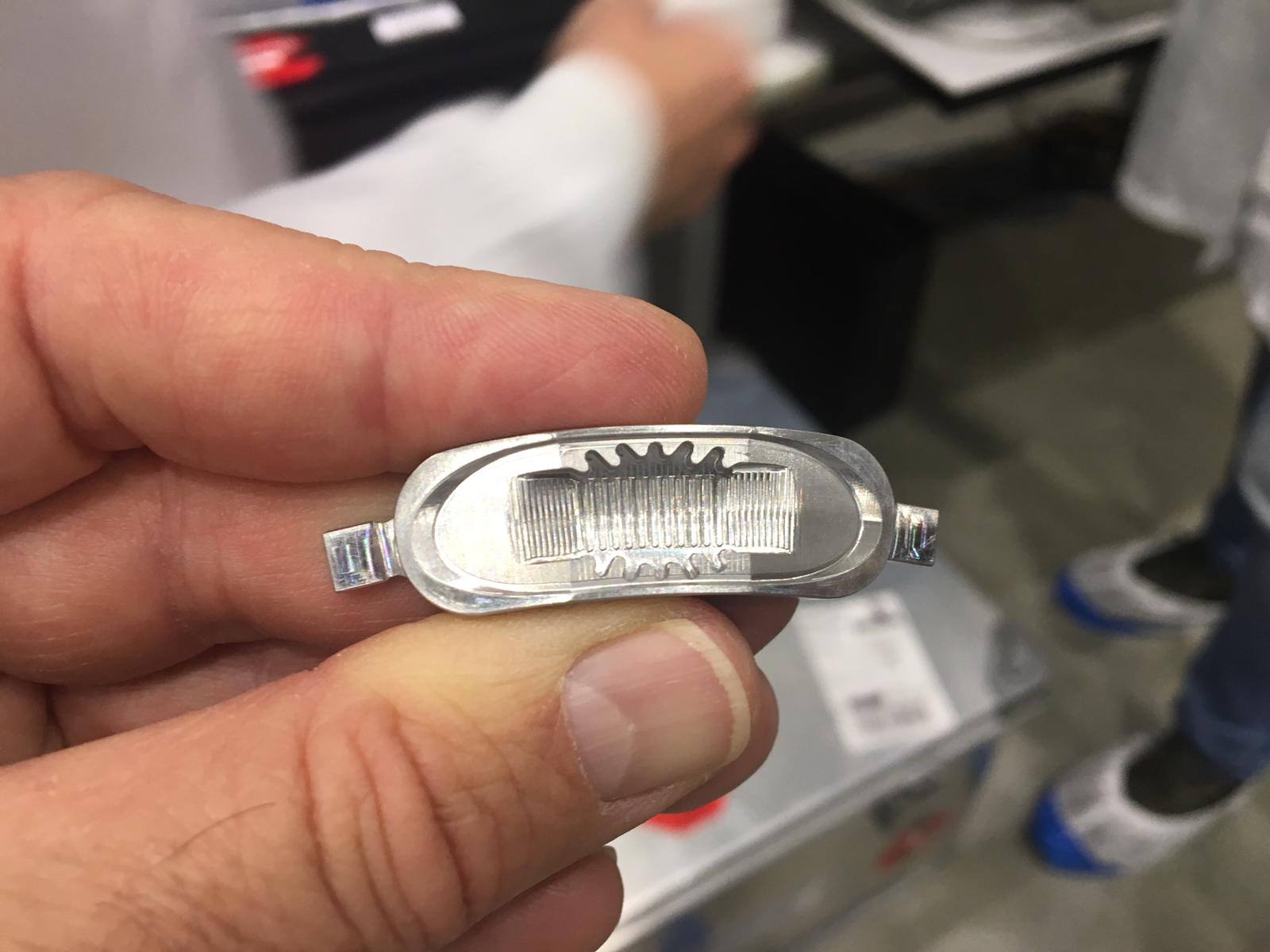The Rosalind Franklin rover’s drill has a maximum reach of two metres. This depth allows access to well-preserved organic material from four billion years ago, when conditions on the surface of Mars were more like those on infant Earth.
After receiving a sample from the drill, Rosalind’s laboratory must prepare the sample to make a detailed study of its mineral and chemical composition. The rover’s Analytical Laboratory Drawer (ALD) mechanisms execute a pre-programmed choreography of sample manipulations to make sure that the instruments can do their job.
How the martian lab works
Preparing a sample for science follows a process chain like on a factory floor. A sequence of automated operations drives the journey of the sample through the lab.
First, the drill deposits the sample on a hand-like device that retracts into the rover’s body. A lever causes the sample to drop into a crushing station.
The crushing station has two jaws – one fixed, the other mobile. The mobile jaw repeatedly presses the sample against the fixed jaw with an oscillatory motion to pulverise it. The resulting particles fall through a narrow gap between the jaws into a dosing station. The ALD has two dosing stations that look like inverted cones.

The rover’s Analytical Laboratory Drawer (ALD) passed thermal and vacuum tests in Turin, Italy, to ensure compatibility with the martian environment. Credits: Thales Alenia Space
“Rosalind will crush the sample early in the morning, when it is coldest – around –30ºC – to preserve the integrity of organic molecules in the sample,” explains Jorge Vago, ExoMars project scientist.
At the base of the dosing station there is a rotating sphere that works like a mini spoon. Each rotation deposits one measured portion of the sample. A piezoelectric actuator vibrates the dosing station. This makes the sample behave like a liquid rather than individual solid particles, helping it flow without sticking to the metal surface.
The powder drops into a small container looking like a bathtub with grooves at the bottom. This ‘bathtub’ resting on the ALD carrousel is called the refillable container. As the carrousel turns under the dosing station, we can make sample “drops” at various positions to cover the refillable container.
The next step is to move the refillable container so that a blade flattens the sample material to keep a precise distance to the instruments. The flattened surface allows observations to be in focus. The carousel rotates to reach the observation window under each of the three analytical laboratory instruments.
After a sample has been studied sufficiently, another blade scrapes clean the container. The sample material drops to the bottom of the analytical laboratory. Rosalind can study either more sample material still in the dosing station or a different sample altogether.
Besides the refillable container, the carousel contains small ovens and calibration targets.

Space assembly, integration and testing squad working around the ExoMars rover’s Analytical Laboratory Drawer (ALD) in the clean room in Turin, Italy. Credits: Thales Alenia Space
Scientific instruments
Rosalind Franklin will be the first mission to analyse the same sample material for mineral and organic chemistry composition. To do so, its Analytical Laboratory Drawer houses three instruments to search for signs of life on Mars.
- MicrOmega is a visible and infrared imaging spectrometer that will identify, at grain scale, the mineralogical and the molecular composition of the martian samples.
- Raman spectrometer uses a laser to identify minerals and biomarkers in samples, giving direct information of potential organic compounds.
- MOMA will combine a gas chromatograph and a laser desorption mass spectrometer to search for biomarkers and investigate the potential origin, evolution and distribution of life on Mars. Rosalind’s lab has 31 ovens, where samples can be heated to release organic molecules that scientists can analyse with gas chromatography techniques.
Keeping it cool and clean
Dedicated electronics and a thermal control system will keep the system working under the cold temperatures on Mars while preserving the samples and possible traces of organic molecules.
Teams on Earth assembled the Analytical Laboratory Drawer in an ultraclean environment under strict planetary protection rules to avoid any external contamination, like unwanted particles, skin cells or spores.
Rosalind has another mechanism under its sleeve: the blank dispenser. This device holds six ultraclean calibration samples made of almost pure silica. Each one is in its own blister, much like aspirins.
“When we need to perform an organic background check, we can command this dispenser to drop a blank sample into the crusher. Any organic molecule detected would signal its presence in the lab and be of reference for future measurements,” explains Jorge.


Discussion: no comments